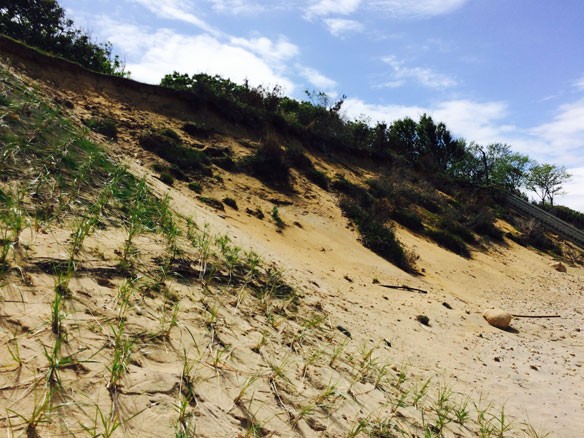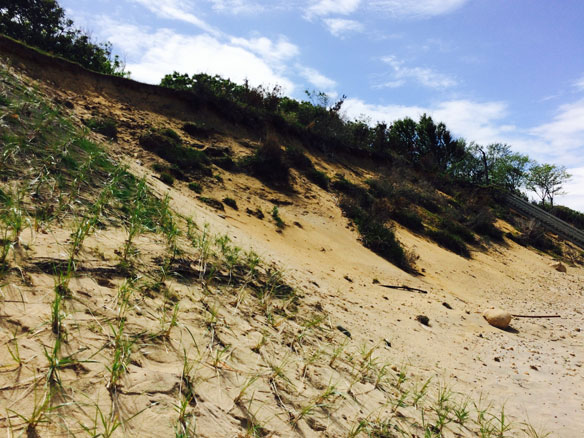
Coastal restoration, living shorelines. Photograph: © SAF — Coastal Care
Excerpts;
A new design of artificial oyster reef-maker could buck the trend on where living shorelines best work.
Researchers at the University of North Carolina at Chapel Hill’s Institute of Marine Sciences, or IMS, are introducing a type of reef that may withstand high-energy wave action areas typically deemed unsuitable for natural shoreline stabilization.
Living shoreline projects are built with various structural and organic materials such as plants, submerged aquatic vegetation, oyster shells and stone. They generally work best along sheltered coasts such as estuaries, bays, lagoons and coastal deltas, where wave energy is low to moderate.
This month, researchers will put to the test a series of reef platforms that are going to be installed as part of what is, to date, the longest state-permitted living shoreline project in North Carolina…
Read Full Article, Coastal Review (06-06-2017)
Living shorelines a more natural approach to preventing coastal erosion, WNCT (05-18-2016)
Living Shorelines: Better Than Bulkheads, Coastal Review Online (02-08-2016)
More than 14,000 miles – 14 percent of continental U.S. coastline — has been armored with hardened structures. Hardened structures cause elevated rates of erosion on the shoreward side of the structure…
NOAA Study Finds Marshes, Reefs, Beaches Can Enhance Coastal Resilience, NOAA (04-29-2015)
NOAA study finds ‘living shorelines’ can lessen climate change’s effects, NOAA (12-22-2015)
Rethinking Living Shorelines, By Orrin H. Pilkey, Rob Young, Norma Longo, and Andy Coburn;Program for the Study of Developed Shorelines / Western Carolina University, March 1, 2012, Nicholas School of the Environment, Duke University
In response to the detrimental environmental impacts caused by traditional erosion control structures, environmental groups, state and federal resource management agencies, now advocate an approach known as “Living Shorelines”that embraces the use of natural habitat elements such as indigenous vegetation, to stabilize and protect eroding shorelines.
“Engineering away our natural defenses: An analysis of shoreline hardening in the US,” A Study by By Rachel K. Pittman, ResearchGate (08-08-2015)
Rapid coastal population growth and development are primary drivers of marine habitat degradation. Although shoreline hardening, a byproduct of development, can accelerate erosion and loss of beaches and tidal wetlands, it is a common practice globally. 22,842 km of continental U.S. shoreline, 14% of the total, has been hardened…









